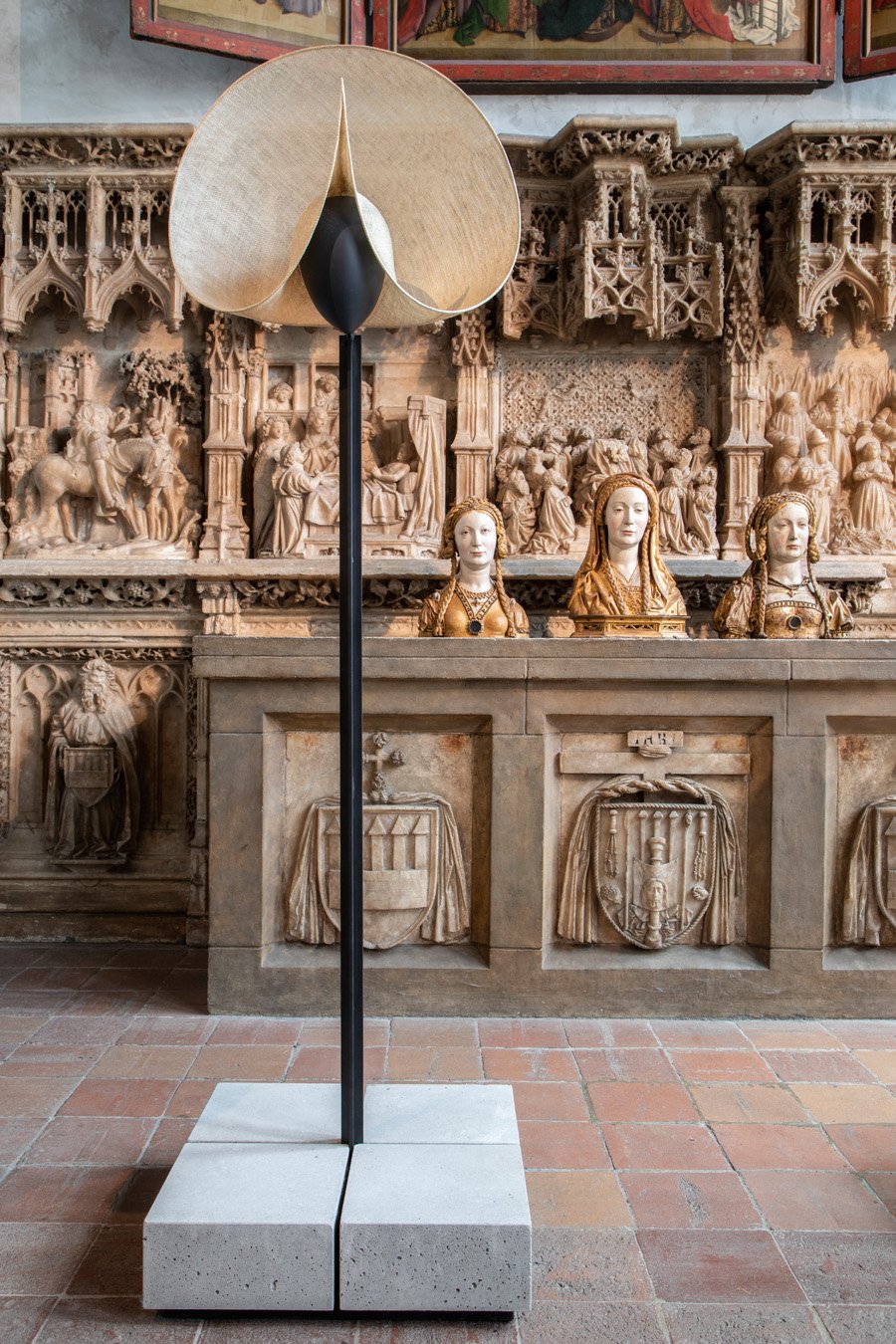
May 10, 2018
For the Design of the Met’s Costume Institute Show, Diller Scofidio + Renfro Channel the Sublime—and Mies
‘Heavenly Bodies: Fashion and the Catholic Imagination,’ opening today, examines the deep connections between contemporary fashion and faith.

In the spring of 2000, fashion designer Raf Simons debuted a collection he dubbed “Confusion.” The show was replete with the rebellious poetics that have since become Simons’s hallmark: heavy knits, clerical collars, black, floor-length cassocks. Some of the models emerged from a silver DeLorean that slowly wound its way across the stage. Simons, who grew up Catholic, later recounted, “It was about memory, but also a settlement. . . . The collection represented a restriction that I tried to free myself of.”
Simons’s cassock is one of more than 150 ensembles on display at the Metropolitan Museum of Art’s latest Costume Institute exhibition, themed on fashion’s complex relationship with the Catholic faith, and vice versa. Like Simons, Heavenly Bodies: Fashion and the Catholic Imagination exerts an artistic license in examining an unequivocally earthly pursuit—contemporary fashion—through the lens of the sublime.
Such a story cannot be told through garments alone. Costume Institute curator Andrew Bolton tapped multidisciplinary architecture firm Diller Scofidio + Renfro (DS+R) to design displays that would generate evocative readings of old and new. Together, the museum and the firm created the largest and most ambitious show in Costume Institute history, spread across 27 galleries over two sites—the Met’s Fifth Avenue Building and the Met Cloisters eight miles north. All told, the exhibition area is roughly equal to an acre-and-a-half of space
Both the magnitude of the exhibition and the sensitivity of the subject matter presented enormous design challenges. A heavy-handed approach could plunge the presentation into kitsch (not to mention sacrilege), whereas too light of touch wouldn’t spark meaningful dialogue between the fashions on display (including an unprecedented loan of more than 40 papal garments from the Vatican), and the sacred objects in the museum’s permanent collection.
“You have to sort of walk a tightrope,” says DS+R principal Elizabeth Diller. “That was one of the really fun things for us to take on—and it was the danger of it, too.”

Heavenly Bodies is the second show DS+R has designed for the Met. The first—for a 2014 exhibition on the work of 20th-century couturier Charles James—relied on technology to examine the intricacies of each gown, through 3D scans, X-rays, digital models, animation, and even video cameras mounted atop robotic arms. This time around, the firm’s scheme is more elemental, relying on lighting, tough materials, and spatial juxtaposition—more Scarpa than Spielberg.
“Holding the show together through a language was really, really important,” says Diller. That cohesion began with Christianity’s most essential symbol, the cross, which incidentally, is also structurally functional: “It’s a very Miesian detail,” the architect adds.
Within the Met’s chapel-like Medieval sculpture gallery, a procession of otherworldly creations by John Galliano, Alexander McQueen, Valentino, and others rest upon broad blackened steel platforms, divided into four quadrants. In the Byzantine galleries, these plinths become raised concrete pedestals, elevating mannequins in glimmering Versace and Dolce & Gabbana more than seven feet off the ground atop steel columns, like icons looming from within invisible niches.
Lighting also took on an important role in conveying a sense of the divine. But it functions in different ways: In the museum’s lower level Anna Wintour Costume Center where the papal garments are on view in a series of acrylic vitrines, the lighting is scientific and precise to fully express the qualities of gems and delicate gold threads (one mantle belonging to Pope Pius IX took 50 women nearly 16 years to embroider). Within the Byzantine and Medieval galleries upstairs, the light is more diffuse, lending a ghostly pallor to the mannequins’ sleeping faces. The strategy for the Cloisters in upper Manhattan (rebuilt from fragments of French monasteries) was entirely different, relying on the natural light streaming through clerestory windows and stained glass.

The most delightful and productive moments in the show occur in the silent conversations between the ancient and the new. In the Cloisters, intricately woven jackets by young British designer Craig Green pick up the colors of 15th-century Netherlandish tapestries. At Met’s Fifth Avenue location, a mannequin in an armor-like ensemble by Jean Paul Gaultier lies in an acrylic coffin alongside a limestone tomb slab depicting a French female warrior. Within the Medieval treasury, a breastplate blooming with silver roses by Alexander McQueen sits perfectly at home with an arm-shaped reliquary for Saint Valentine dating from the 14th century. “We thought about the mutually supportive relationships between decorative art, art, liturgy, and how the whole environment works in concert,” explains DS+R project lead Kumar Atre.
In spite of these productive and fascinating adjacencies, the show has generated controversy—even before its public opening. Some have deemed the show sacrilegious for its appropriation of sacred Catholic iconography (Rihanna’s pope-themed ensemble at the Met Gala did little to help). At the opposite end of the ideological spectrum, others have criticized the show for not being challenging enough, especially for its predominantly white, male, and western roster of designers.
“Look, we’re in a complex world,” says Diller, but “it’s an art lens, and a historic lens. We’ve given ourselves the license and put the brackets on the show that allow us to look at those aspects.”
“It’s provocative,” she adds. “That’s what makes it worth seeing.”
Heavenly Bodies: Fashion and the Catholic Imagination is on view at the Metropolitan Museum of Art and the Met Cloisters through October 8.
You might also like, “NYCxDesign 2018: The Top 7 Exhibitions to See.”





























